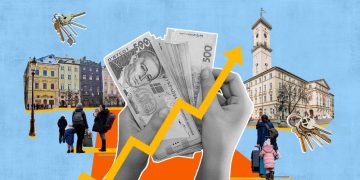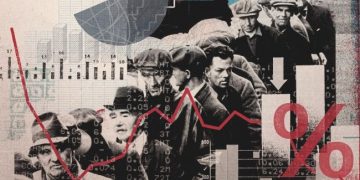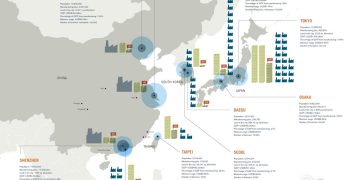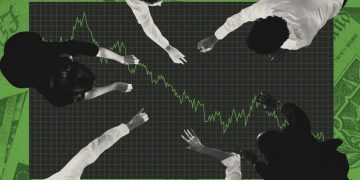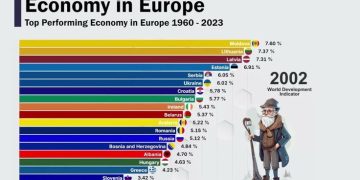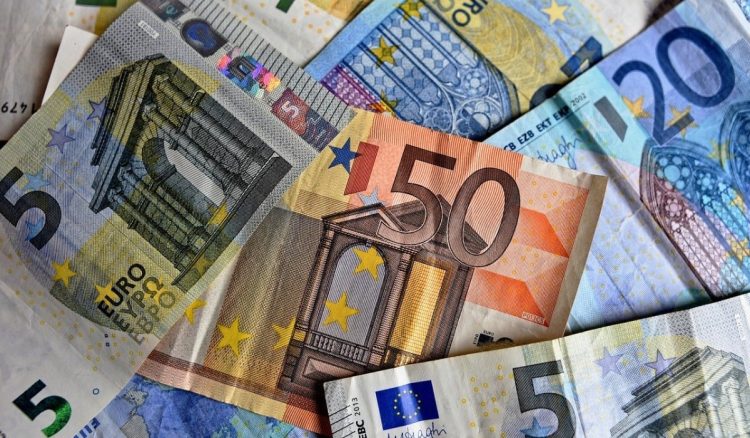Introduction
The Euro, one of the world’s most widely traded currencies, has experienced fluctuating fortunes since its inception in 1999. In recent years, it has faced numerous challenges, from geopolitical tensions to economic slowdowns within the Eurozone. However, as global economic conditions evolve, many analysts are starting to wonder: Is the Euro poised for a breakout? This article explores the current trends influencing the Euro’s value, the economic factors driving its strength, the implications for businesses and investors, and projections for the currency in the coming months.
1. Current Trends Affecting the Euro’s Value
The Euro’s value is determined by a complex mix of internal and external factors, which vary over time. In recent months, the currency has shown signs of strength, prompting speculation about its future trajectory. Several trends are currently affecting the Euro’s value, both within the Eurozone and in the broader global economy.
Recovery from the COVID-19 Pandemic
The global economic recovery following the pandemic is a significant factor influencing the Euro’s strength. As countries around the world resume normal economic activity, the Eurozone has been gradually recovering, with a focus on growth in key sectors like manufacturing, services, and exports. However, this recovery has been uneven across member countries, with some nations struggling more than others. The Euro’s strength is closely linked to the pace and sustainability of this recovery.
Monetary Policy and Interest Rates
The European Central Bank (ECB) plays a central role in shaping the value of the Euro. The ECB’s monetary policies, including decisions on interest rates and quantitative easing, are key determinants of the currency’s strength. In recent years, the ECB has pursued an accommodative stance, keeping interest rates low to stimulate economic growth. However, market speculation regarding future interest rate hikes could influence the Euro’s value, as higher rates tend to attract investment and increase demand for the currency.
Geopolitical Tensions
Geopolitical events such as Brexit, the U.S.-China trade war, and other international conflicts have had a profound impact on global markets and currencies. For the Euro, geopolitical uncertainty often leads to market volatility, which can strengthen or weaken the currency. The outcome of trade negotiations, shifts in international alliances, and regional political instability can all influence investor confidence in the Eurozone and, by extension, the Euro.

2. Key Economic Factors Driving the Currency’s Strength
The Euro’s strength is largely driven by the economic performance of the Eurozone and key global factors. While some of these factors are temporary, others have long-term implications for the currency.
Eurozone Economic Performance
The economic health of the Eurozone is a primary driver of the Euro’s value. Strong economic growth, low unemployment, and stable inflation contribute to investor confidence in the Euro. Conversely, challenges such as slow economic growth, high debt levels, or political instability can weaken the currency. As the Eurozone continues its recovery from the pandemic, growth in key economies like Germany, France, and Italy will be crucial for sustaining the Euro’s strength.
Inflation and Interest Rates
Inflation rates in the Eurozone are closely monitored by the ECB and investors alike. If inflation rises above the ECB’s target of just under 2%, the central bank may consider tightening monetary policy by raising interest rates or reducing asset purchases. These actions could make the Euro more attractive to investors, thereby increasing its value. However, if inflation remains persistently low, the ECB may need to continue its accommodative stance, which could weigh on the Euro’s strength.
Trade and Current Account Surplus
The Eurozone’s trade balance plays a key role in determining the demand for the Euro. A current account surplus indicates that the Eurozone is exporting more than it is importing, which leads to increased demand for the Euro as foreign buyers need the currency to pay for Eurozone goods and services. A strong trade surplus, particularly in the manufacturing and export sectors, supports a stronger Euro.
U.S. Dollar Movements
As the U.S. dollar is the world’s primary reserve currency, fluctuations in its value often have a direct impact on the Euro. When the U.S. dollar weakens, the Euro tends to strengthen, and vice versa. This inverse relationship is due to the Euro and U.S. dollar being the two largest currencies in global trade and investment. The policies of the U.S. Federal Reserve, particularly around interest rates, also play a significant role in shaping the relationship between the Euro and the U.S. dollar.
3. What a Strong Euro Means for Businesses and Investors
A strong Euro has both positive and negative implications for businesses and investors in the Eurozone and beyond. Understanding these dynamics is essential for navigating the current market conditions.
For Businesses
A strong Euro can have mixed effects on businesses. On the one hand, a stronger currency makes imports cheaper, which can reduce the cost of raw materials and intermediate goods for companies that rely on foreign supplies. This can improve profit margins, particularly for industries that rely heavily on imports, such as manufacturing and retail.
However, a stronger Euro can also make Eurozone exports more expensive for foreign buyers, potentially reducing demand for European goods and services. For export-heavy economies like Germany, this could lead to slower growth in international sales, as foreign customers may seek cheaper alternatives from countries with weaker currencies.
For Investors
A strong Euro can offer investment opportunities for those holding Euro-denominated assets. Investors in European stocks, bonds, and real estate could see increased returns as the value of their assets appreciates in line with the Euro’s strength. Additionally, a strong Euro can boost investor sentiment toward European markets, attracting capital flows into the region.
However, the effects of a strong Euro are more nuanced for international investors. Those who hold assets in other currencies may see their returns eroded if the Euro strengthens, as currency exchange rates could reduce the value of their investments. For example, a U.S.-based investor holding European equities could see a decline in the value of their holdings if the Euro strengthens against the U.S. dollar.
4. Projections for the Euro in the Coming Months
Looking ahead, several factors will influence the Euro’s trajectory in the coming months. The pace of economic recovery in the Eurozone, the ECB’s monetary policies, and external factors like global trade tensions will all play a role in determining the Euro’s future direction.
Economic Recovery in the Eurozone
The Eurozone’s recovery from the pandemic will likely remain a key determinant of the Euro’s strength. If the region experiences steady economic growth, rising consumer confidence, and improving labor markets, the Euro could continue to appreciate. However, any setbacks in the recovery, such as renewed lockdowns, higher-than-expected inflation, or slow vaccination rates in some countries, could weigh on the currency.
ECB Policies and Interest Rates
The ECB’s monetary policy decisions will be pivotal in shaping the Euro’s value. If the central bank decides to tighten policy by raising interest rates or reducing stimulus measures, this could support the Euro’s strength. However, if the ECB continues with accommodative policies to support economic recovery, the Euro may struggle to gain ground against other currencies.
Global Economic Conditions
Global events, such as U.S. economic performance, trade negotiations, or geopolitical developments, will continue to influence the Euro’s trajectory. The Eurozone is highly interconnected with global markets, so changes in global growth prospects or trade dynamics could have significant implications for the currency’s performance.
Conclusion
The Euro has shown signs of strength in recent months, supported by an economic recovery in the Eurozone, ECB policies, and global market conditions. However, whether the currency is ready for a breakout depends on the continued recovery of the Eurozone economy, potential ECB policy shifts, and broader geopolitical factors. Businesses and investors will need to carefully monitor these trends, as the Euro’s strength can have both positive and negative effects on trade, investments, and profits. As we look ahead, the Euro’s future trajectory remains uncertain, but its resilience in the face of global challenges offers hope for further gains in the months to come.







